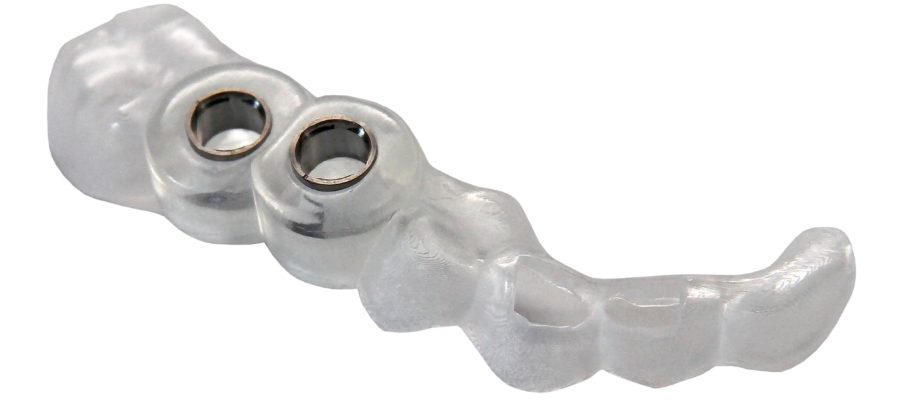Biocompatible 3D printing for healthcare came of age when the COVID pandemic set in. The almost instant supply chain issues affected the availability of PPE (personal protective equipment) for frontline healthcare workers. The additive manufacturing industry, including Proto3000 quickly sprang into action. They turned their capacity towards 3D-printed PPE to fill much of the gap.
And they couldn’t have done it without biocompatible 3D printing materials. PPE is in contact with human skin for extended periods. So, biocompatible materials are required for PPE, along with printing in approved facilities and according to Health Canada’s standards.
But the benefits of 3D printing with biocompatible materials can go far beyond PPE. From dental applications to surgical guides, 3D printing delivers many valuable benefits for the healthcare industry.
Greater Customization
Whether a patient’s teeth need repair, or a broken bone, one thing is true. They are totally unique to the patient. So surgery and other medical procedures must be specific to the patient’s unique physical characteristics.
Using scans of the area, highly accurate implants, guides and moulds can be printed that are specific to the patient’s requirements.
Faster Procedures
Repair of an isolated orbital fracture requires a highly accurate implant shape and placement. Researchers at the University of Michigan* 3D-printed serializable moulds to help customize standard orbital implants. They found that using the 3D-printed moulds cut time in the operating room almost in half.
Better Accuracy
Placing pins to help breaks and fractures heal requires great accuracy. Without it, the pins may not offer the support required. And that can extend healing and rehabilitation times. So, surgeons have turned to patient-specific biocompatible 3D-printed guides, which improve the accuracy of pin placement versus standard guides.
The Future of Healthcare with Biocompatible 3D Printing
Looking forward, biocompatible 3D printing makes healthcare more flexible, responsive, and proactive in the face of emerging medical crises. For day-to-day healthcare provision, biocompatible 3D printing makes it less invasive for patients, more effective for medical professionals, and improves outcomes for everyone.
To learn more, check out our recent article How 3D Printing Improves Healthcare Delivery.
*Reference: “Use of 3D Printed Models to Create Molds for Shaping Implants for Surgical Repair of Orbital Fractures“, Academic Radiology, Volume 27, Issue 4, April 2020, Pages 536-542
